Valle de la Muerte y Luna
After spending a few slow days in Mendoza followed by the bus strike, we were determined to get the most out of our days in San Pedro. Karin had visited before with her mother, so she had some ideas and wanted me to walk away with a head full of good memories of Chile.
For the first day we booked a tour with the company directly across the street from our hotel. As tours in San Pedro go it was a light one, starting in the afternoon and lasting until just after sunset. All we would need is some water and snacks if we wanted.
Our guide was named Pablo and he was very knowledgeable about the desert. He explained how the area was originally named Valle de la Marte (Valley of Mars) but that a Belgian priest misheard it spoken by the locals and at some point in history mistakenly renamed it Valle de la Muerte (Valley of Death).
Both names were fitting. There was almost no life able to survive in this climate, which is the most dry, arid desert on the entire planet.
The trade-off: bright red of the desert filling the eye to the horizon.
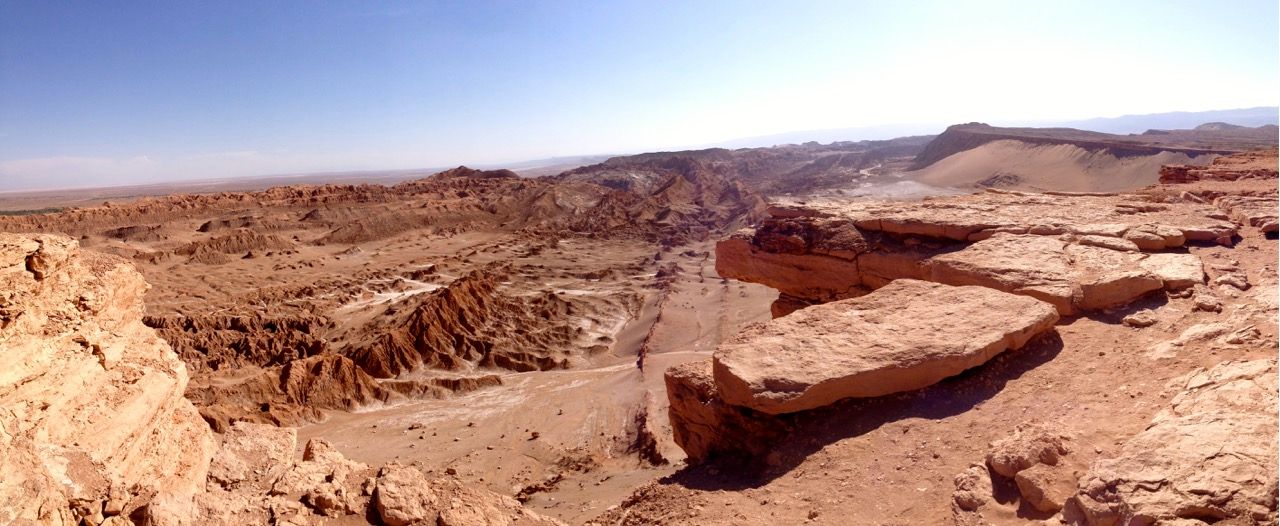

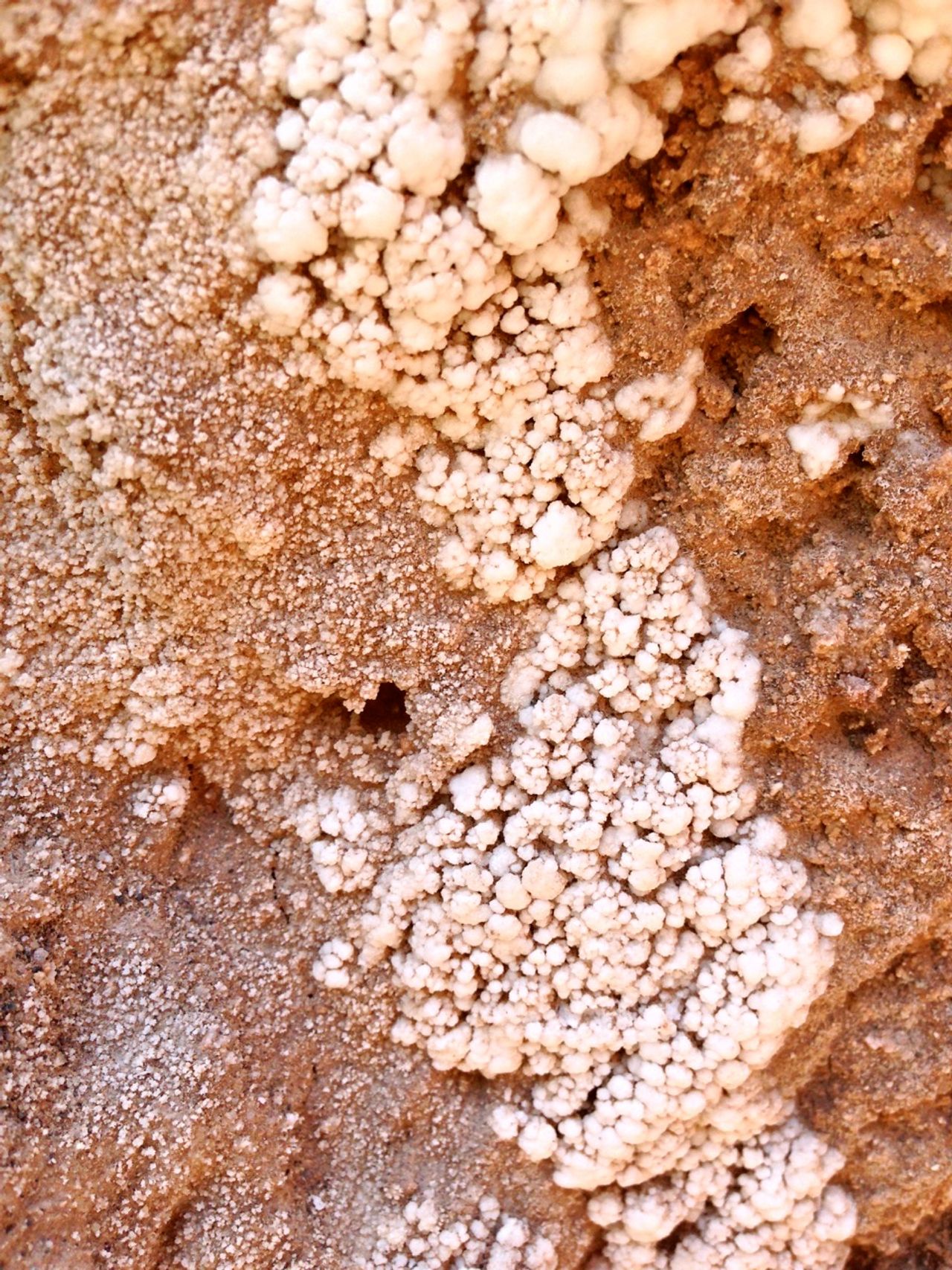


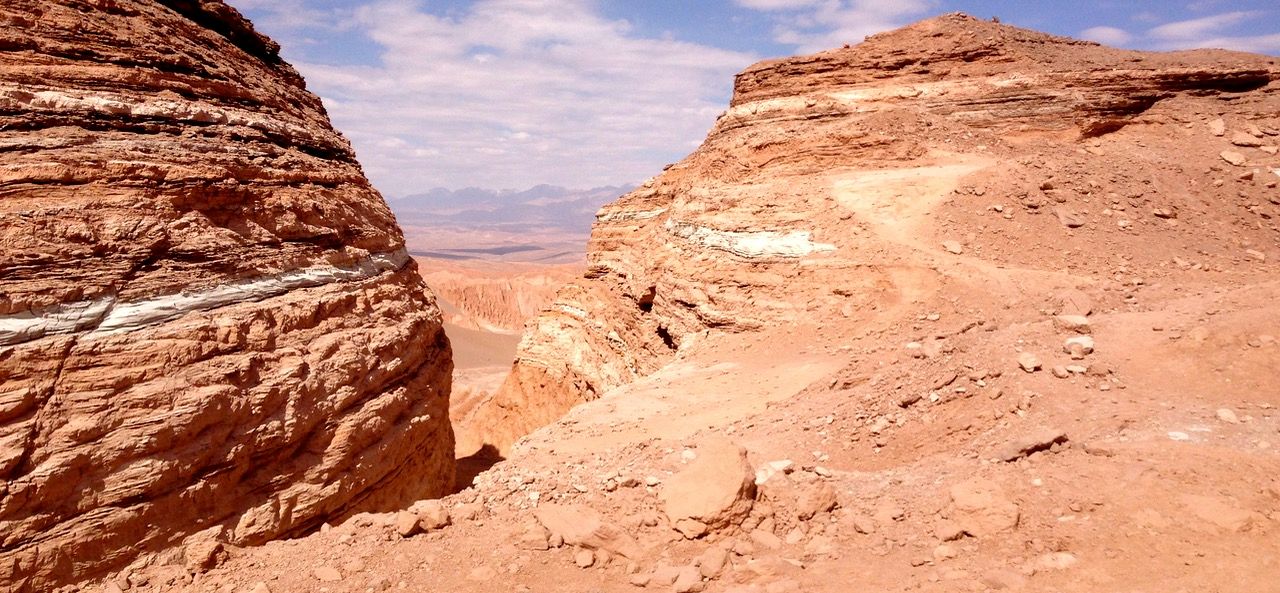
We first went atop a small-ish mountain in a van. We walked around and looked at all there was to see. Pablo pointed out the one plant, rica-rica, that was able to survive on the very infrequent precipitation that falls here.
The other thing stopping life is the salt. There is salt everywhere. It just crystallizes because of the dry climate. If you look closely at many rocks, you see they have a white powder or even larger growths of salt on them. It's just regular salt and it's fine to consume.
We piled back into the van and went to another location with even more salt. These aren't the salt flats that everyone hears about; they're more like small mountains. Pablo said the timing of the tour was intentional. The sun was getting lower in the sky and the shadows start getting longer. As the salt stops receiving direct sunlight, it cools off, contracts, and starts cracking, causing the entire landscape to emit a very faint noise.
Our last stop was another valley: Valle de la Luna (Valley of the Moon). Like our first stop, it was expansive and very impressive. Apparently there is a special tour during full moons, but our trip didn't fall within that window. Nevertheless, it was a spectacular place, with salt covered mountains, sand dunes, and a breathtaking sunset.
The sunset was the climax of the tour. We hiked up a mountain and had a superb view:
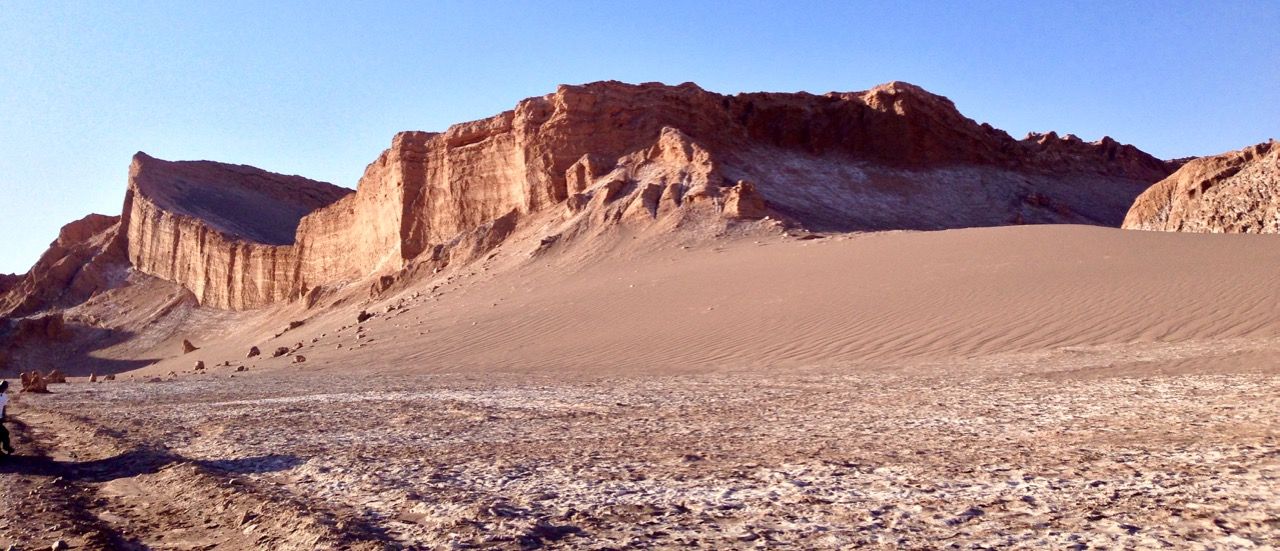

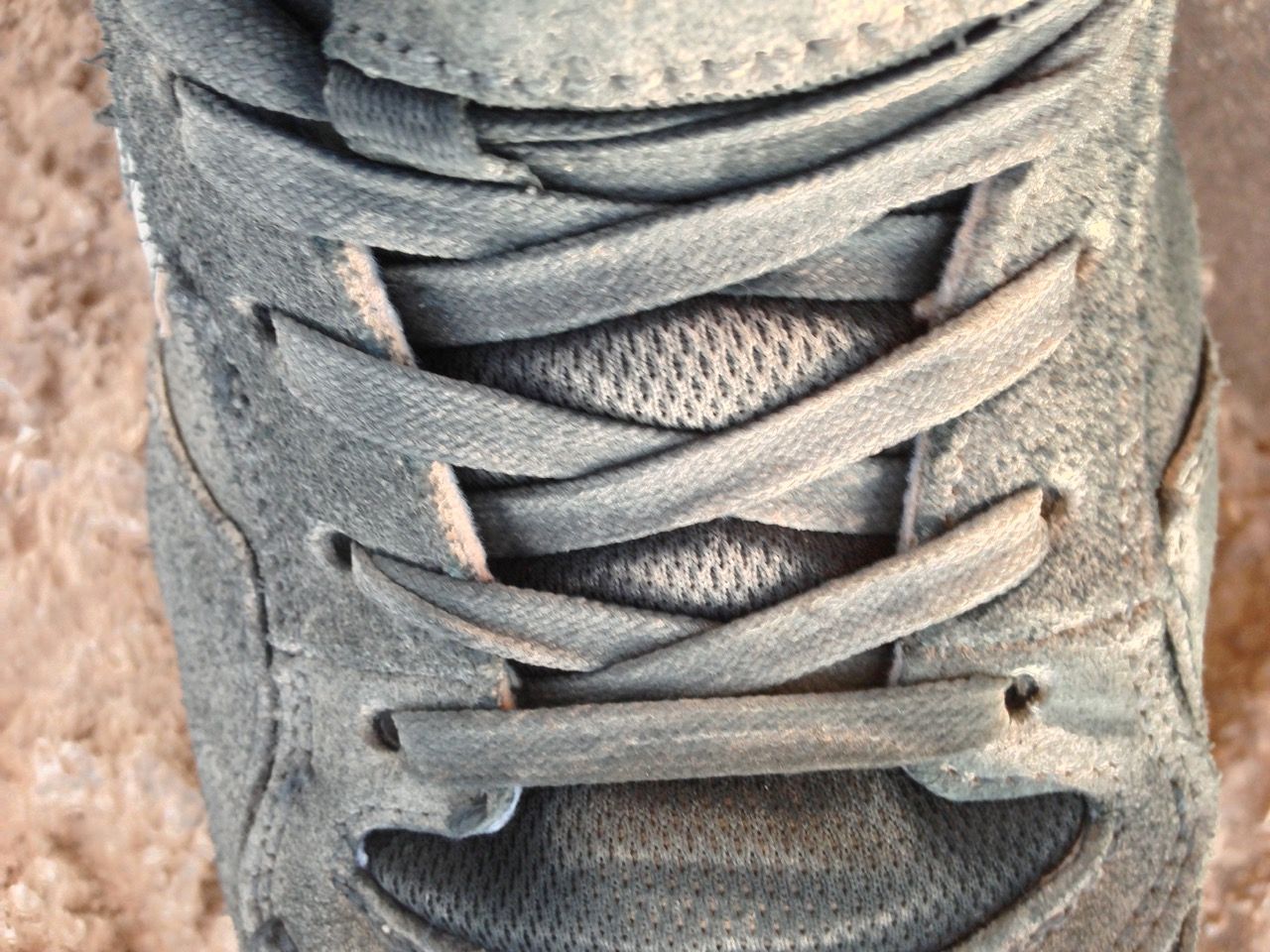
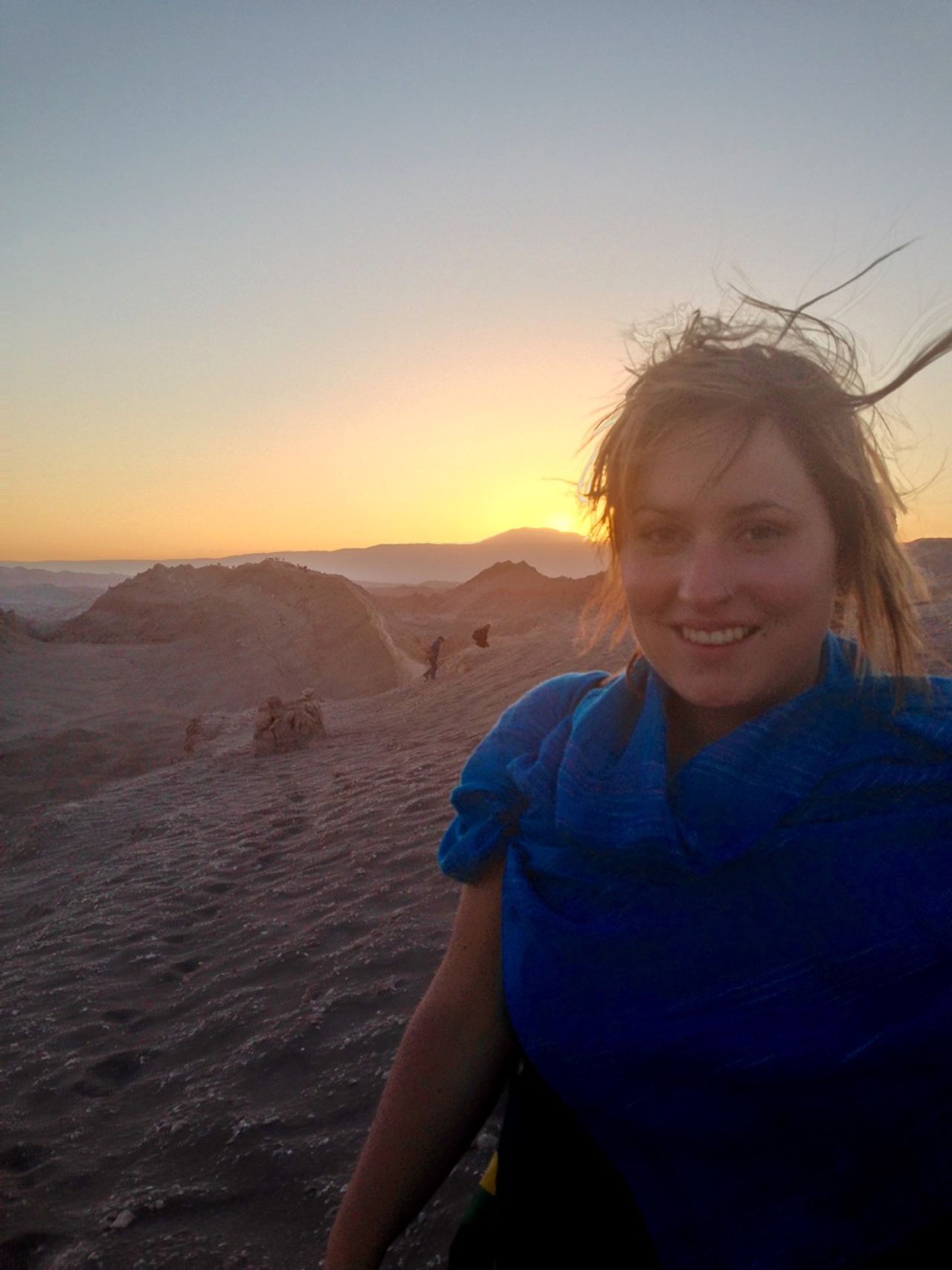

Afterwards we hiked back down the mountain and took a quiet ride back into town. We found a restaurant right around the corner called Café Export, had a good meal, and went to bed early to prepare for the next day's adventure.